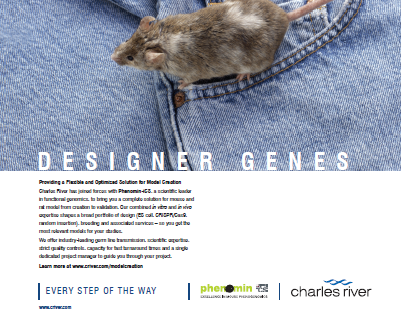This website uses cookies to ensure you get the best experience on our website. Learn more

The course programme is split into specialty topics as outlined below, with Day 2 consisting of two tracks from which attendees can choose.
Main topics: REGULATORY UPDATES/ GENETICALLY ALTERED MOUSE MODELS AND NEW TECHNOLOGIES/ ANIMAL HEALTH DIAGNOSTICS UPDATES/ MICROBIOTA/ TRANSLATIONAL SCIENCE EXPERIENCES/ REFINEMENTS IN EXPERIMENTAL PROCEDURES/ BACK TO BASICS – MOUSE AND RAT
PHENOMIN's team will attend the course and will share its expertise for increasing your awareness regarding the advantage and limits of the CRISPR-CAS9 genome editing technics in vivo and for helping you in improving the reproducibility of your scientific data with in vivo studies.
Speaker: Guillaume Pavlovic – PHENOMIN-ICS
In the past years, CRISPR/Cas9 has shown to be a real revolution for generation of genetically engineered animals and a real hope for genetic therapy in humans. This powerful genome editing technology is working in a very large panel of species from plants to mammals. In rodents, numerous knock-out or point mutations models were easily generated with this approach. Among other advantages, it is fast (to obtain founder animals), quite easy (in comparison to ES route) and cost-effective. It also allows accessing a large panel of background and thus promise to be a powerful tool for polygenic studies.
In this session, we will present our results for generating complex mouse or rat models. We developed the CRISpr Mediated REarrangement (CRISMERE) strategy, which takes advantage of the CRISPR/Cas9 system, to generate easily most of the desired structural variant & CNV rearrangements. We were indeed able to achieve deletions, duplications, and inversions of genomic regions as large as 24.4 Mb in rat and mouse (the good).
We also used CRISPR/Cas9 to develop knock-in or conditional lines. We will show the actual limitations of this system for the modification of “big” genomic sequences in mouse and rat (the bad) and discuss possible solutions and explanations.
Finally, we will also show that very careful validation of the lines generated by CRISPR/Cas9 is requested (the ugly) and how some unexpected event can be used to generate targeted overexpressing models.
Speaker: Patrick Reilly – PHENOMIN-ICS
The issue of replication of data in life sciences research is a growing concern, with objective analyses finding that 50% or more of experimental findings cannot be reproduced in subsequent studies. This reduces faith in published research, undermines the public reputation of science, and hazards future sources of public funding. In the vast majority of cases, the problem is not due to any impropriety on the part of researchers. This “replication crisis” has brought forth numerous strategies for ensuring replicable findings, many of them applied to genetic studies in mice at PHENOMIN-ICS as a part of the International Mouse Phenotyping Consortium. In this session, I will discuss a number of the strategies, ranging from the genetic background of the animals examined, to standardized protocols and ethical regimens, to the longitudinal tracking of controls, to the public dissemination of data, to the statistical tests applied. I will also describe how these best practices might be applied to in vivo studies in your own labs with an integrated cost analysis and examples for each.
![]() -
Workshop
-
Workshop